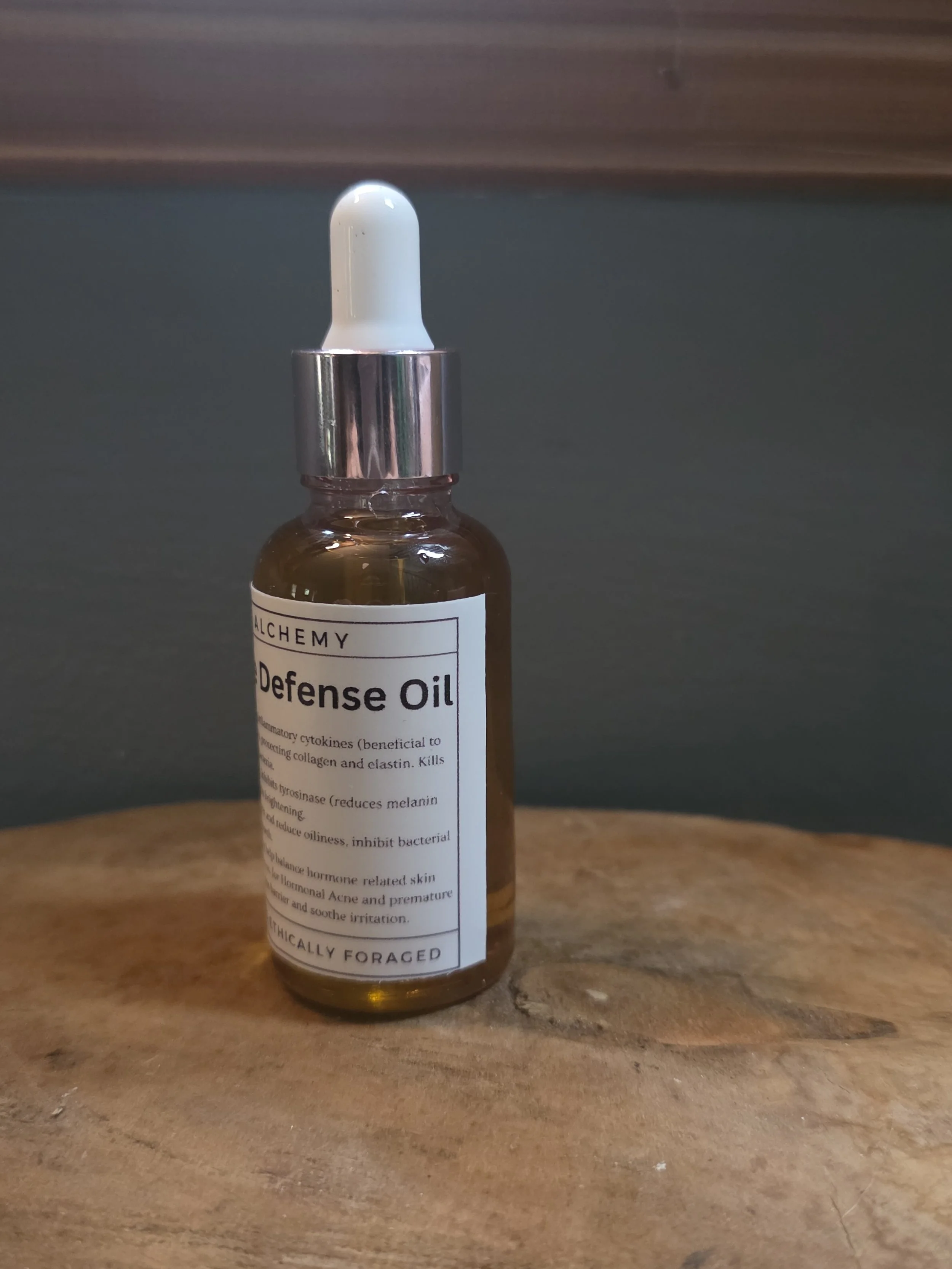



Magnolia Acne & Irritation Skincare Oil 1 oz
Magnolia leaves contain a rich array of bioactive compounds with demonstrated antioxidant, anti-inflammatory, antimicrobial, and anti-aging properties, making them a valuable (though underutilized) botanical ingredient in skincare.
🌿 Active Ingredients in Magnolia Leaves
Honokiol & Magnolol
Flavonoids (e.g., quercetin, kaempferol)
Tannins
Essential Olis
Lignans
Phenolic acids (e.g., chlorogenic acid, caffeic acid)
💧 How These Compounds Benefit Skin
1. Honokiol & Magnolol
Properties: Anti-inflammatory, antioxidant, antimicrobial, anti-tumor
How they work:
Suppress NF-κB signaling, reducing inflammatory cytokines (helpful for sensitive, red, or inflamed skin)
Inhibit MMPs (matrix metalloproteinases), protecting collagen and elastin (anti-aging)
Kill acne-causing bacteria like Cutibacterium acnes
Skin concerns addressed:
Acne
Inflammation (eczema, rosacea)
Aging (wrinkles, loss of firmness)
2. Flavonoids (Quercetin, Kaempferol)
Properties: Antioxidant, anti-inflammatory, UV-protective, brightening
How they work:
Neutralize reactive oxygen species (ROS) to prevent DNA and cell damage
Inhibit tyrosinase (reduces melanin overproduction) for skin brightening
Skin concerns addressed:
Hyperpigmentation and dark spots
Photoaging and dullness
Inflammation and UV damage
3. Tannins
Properties: Astringent, antimicrobial, pore-refining
How they work:
Contract skin proteins to tighten pores and reduce oiliness
Inhibit bacterial and fungal growth
Skin concerns addressed:
Enlarged pores
Oily skin
Acne-prone skin
4. Essential Oils (β-Caryophyllene, α-Pinene)
Properties: Anti-inflammatory, analgesic, antimicrobial
How they work:
Reduce inflammation through CB2 receptor activation (like cannabinoids)
Disrupt bacterial membranes
Skin concerns addressed:
Irritated or sensitive skin
Acne and microbial imbalances
Minor pain or skin discomfort
5. Lignans
Properties: Antioxidant, estrogen-like activity
How they work:
Bind to estrogen receptors and may help balance hormone-related skin issues
Protect collagen and reduce oxidative stress
Skin concerns addressed:
Hormonal acne
Premature aging
6. Phenolic Acids (Chlorogenic acid, Caffeic acid)
Properties: Anti-inflammatory, antimicrobial, skin barrier support
How they work:
Protect keratinocytes from oxidative stress
Strengthen the skin barrier and soothe irritation
Skin concerns addressed:
Sensitive skin
Compromised skin barrier
Irritation/redness
Magnolia leaves contain a rich array of bioactive compounds with demonstrated antioxidant, anti-inflammatory, antimicrobial, and anti-aging properties, making them a valuable (though underutilized) botanical ingredient in skincare.
🌿 Active Ingredients in Magnolia Leaves
Honokiol & Magnolol
Flavonoids (e.g., quercetin, kaempferol)
Tannins
Essential Olis
Lignans
Phenolic acids (e.g., chlorogenic acid, caffeic acid)
💧 How These Compounds Benefit Skin
1. Honokiol & Magnolol
Properties: Anti-inflammatory, antioxidant, antimicrobial, anti-tumor
How they work:
Suppress NF-κB signaling, reducing inflammatory cytokines (helpful for sensitive, red, or inflamed skin)
Inhibit MMPs (matrix metalloproteinases), protecting collagen and elastin (anti-aging)
Kill acne-causing bacteria like Cutibacterium acnes
Skin concerns addressed:
Acne
Inflammation (eczema, rosacea)
Aging (wrinkles, loss of firmness)
2. Flavonoids (Quercetin, Kaempferol)
Properties: Antioxidant, anti-inflammatory, UV-protective, brightening
How they work:
Neutralize reactive oxygen species (ROS) to prevent DNA and cell damage
Inhibit tyrosinase (reduces melanin overproduction) for skin brightening
Skin concerns addressed:
Hyperpigmentation and dark spots
Photoaging and dullness
Inflammation and UV damage
3. Tannins
Properties: Astringent, antimicrobial, pore-refining
How they work:
Contract skin proteins to tighten pores and reduce oiliness
Inhibit bacterial and fungal growth
Skin concerns addressed:
Enlarged pores
Oily skin
Acne-prone skin
4. Essential Oils (β-Caryophyllene, α-Pinene)
Properties: Anti-inflammatory, analgesic, antimicrobial
How they work:
Reduce inflammation through CB2 receptor activation (like cannabinoids)
Disrupt bacterial membranes
Skin concerns addressed:
Irritated or sensitive skin
Acne and microbial imbalances
Minor pain or skin discomfort
5. Lignans
Properties: Antioxidant, estrogen-like activity
How they work:
Bind to estrogen receptors and may help balance hormone-related skin issues
Protect collagen and reduce oxidative stress
Skin concerns addressed:
Hormonal acne
Premature aging
6. Phenolic Acids (Chlorogenic acid, Caffeic acid)
Properties: Anti-inflammatory, antimicrobial, skin barrier support
How they work:
Protect keratinocytes from oxidative stress
Strengthen the skin barrier and soothe irritation
Skin concerns addressed:
Sensitive skin
Compromised skin barrier
Irritation/redness
